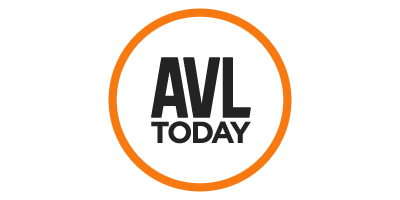About two weeks ago, water finally started flowing into pipes of Asheville’s homes and businesses. But even as many rejoiced at the return, the warnings were strong and frequent: This water is not for cooking or drinking. Even without the City of Asheville’s messaging, though, the need for a boil water notice is visually apparent. The discolored, cloudy water hardly encourages consumption.
But according to many of our readers, the implications of the boil water notice and the guidance on safe use have, at times, been as clear as the water itself. So, we’re going to break down what it means to be under a boil water notice and how the city determines the water’s safety.
Note: If you need a little background on the water system damage and the restoration progress, check out this article first.
Testing for contaminants
At the Wednesday, Oct. 23 briefing, Water Resources Department Public Information Officer Clay Chandler emphasized that the boil water notice is in effect because of turbidity levels. Testing of water at the source + in the distribution system is being conducted every day as part of the post-Helene water sampling plan. Of the system’s 184 sampling stations, 35 are tested per day (normally, that number is 8-10 per day) and target sampling is 40-60. And because the department’s in-house testing is more precise when the water is clear, samples are being sent to a third-party lab to ensure greater accuracy.
Staff test daily for total coliform, E.Coli, and chlorine. Because of the storm, the department is also conducting daily testing for aluminum, iron, and manganese (testing that would typically be done weekly).
The first three fall under the federal government’s primary maximum contaminant limits (MCLs) for drinking water, which are enforceable and must be adhered to; the latter three are under the government’s secondary MCLs, which are only recommended based on water clarity and aesthetics. MCLs dictate acceptable levels of each contaminant allowed in potable water.
What the samples say
The City of Asheville has shared a spreadsheet, updated daily, with the results of water sample testing. The spreadsheet includes results for the primary MCLs.
To add a little context to these results, the federal government allows the following limits:
- Chlorine can measure 4 parts per million (ppm).
- In consultation with the EPA and the NC Department of Environmental Quality, crews initially chlorinated at 8 ppm, then dropped down to 6 ppm.
- Coliform is allowed no more than five positive tests per month.
- Asheville has had zero positive tests since the storm.
- E.Coli levels must be zero.
- Asheville has had no detections of E.Coli since Helene.
Chandler shared that the iron and manganese levels in the currently unfiltered water were slightly higher than their MCLs (0.3 ppm and 0.05 ppm, respectively). Because of that, said Chandler, “those with medical conditions susceptible to increased levels of aluminum, iron, manganese, and chlorine over a long period of time should consult with their doctor.”
Of these secondary contaminants, aluminum makes the water look cloudy and iron and manganese tastes slightly metallic and can cause staining. The in-reservoir treatment happening at North Fork will help reduce the iron and manganese levels.
Using your water safely
That’s what’s going on behind the distribution system scenes — now let’s take a look at your tap. Right now, all City of Asheville water is under a boil water notice. Practically speaking, this means that the water is not safe for consumption when it comes out of your faucet, because of the untreated water in the system and its levels of turbidity. The notice will not be lifted until treated water is running throughout the whole system.
In a basic way, the guidance states that water cannot be consumed unless it has been brought to a full rolling boil for at least one minute (and then cooled after, of course). Consumption includes things like drinking, cooking, brushing teeth, washing fruit or vegetables, making baby formula, and giving it to your pets. According to the city, in-home water treatments and water pitchers with filters don’t provide adequate protection.
The water can be used for laundry, bathing, handwashing, and washing dishes — but don’t stop reading there. There are some important caveats:
- You should not wash your dishes by hand with tap water. Use boiled-then-cooled water or bottled water — or after washing with a dish detergent rinse in a dilute bleach (meaning one tablespoon of unscented bleach per gallon of water). All dishes should be dried completely before use.
- If your dishwasher gets to at least 170 degrees and has a full dry cycle, you can use it. Note: Most home dishwashers don’t get that hot — if you aren’t sure about the temperature, use an alternative source or rinse in a dilute bleach.
- It is safe to wash your clothes with tap water, as long as they’re completely dry because you wear them. Note: The sediment in the water may cause discoloration.
- Healthy individuals can shower, bath, shave, and wash with the water, as long as they don’t swallow the water and avoid shaving nicks.
- However, if you have an open wound, cut, blister, or surgical wound, or if you’re immunocompromised, you should use boiled-then-cooled water or water from a different source.
- The city has also said that sponge bathing for infants or small children is preferable, so as to avoid accidental ingestion.
- For basic personal hygiene, washing your hands with soap and tap water is fine.
- However, if you’re washing before you prepare food, boiled-then-cooled or bottled water should be used.
Read the City of Asheville’s frequently asked questions for more details on the boil water notice. You’ll also find answers to questions about water testing.











